Andrew Adamatzky
NEAT and HyperNEAT based Design for Soft Actuator Controllers
Jun 05, 2025Abstract:Since soft robotics are composed of compliant materials, they perform better than conventional rigid robotics in specific fields, such as medical applications. However, the field of soft robotics is fairly new, and the design process of their morphology and their controller strategies has not yet been thoroughly studied. Consequently, here, an automated design method for the controller of soft actuators based on Neuroevolution is proposed. Specifically, the suggested techniques employ Neuroevolution of Augmenting Topologies (NEAT) and Hypercube-based NEAT (HyperNEAT) to generate the synchronization profile of the components of a simulated soft actuator by employing Compositional Pattern Producing Networks (CPPNs). As a baseline methodology, a Standard Genetic Algorithm (SGA) was used. Moreover, to test the robustness of the proposed methodologies, both high- and low-performing morphologies of soft actuators were utilized as testbeds. Moreover, the use of an affluent and a more limited set of activation functions for the Neuroevolution targets was tested throughout the experiments. The results support the hypothesis that Neuroevolution based methodologies are more appropriate for designing controllers that align with both types of morphologies. In specific, NEAT performed better for all different scenarios tested and produced more simplistic networks that are easier to implement in real life applications.
Designing morphologies of soft medical devices using cooperative neuro coevolution
Jun 04, 2025Abstract:Soft robots have proven to outperform traditional robots in applications related to propagation in geometrically constrained environments. Designing these robots and their controllers is an intricate task, since their building materials exhibit non-linear properties. Human designs may be biased; hence, alternative designing processes should be considered. We present a cooperative neuro coevolution approach to designing the morphologies of soft actuators and their controllers for applications in drug delivery apparatus. Morphologies and controllers are encoded as compositional pattern-producing networks evolved by Neuroevolution of Augmented Topologies (NEAT) and in cooperative coevolution methodology, taking into account different collaboration methods. Four collaboration methods are studied: n best individuals, n worst individuals, n best and worst individuals, and n random individuals. As a performance baseline, the results from the implementation of Age-Fitness Pareto Optimisation (AFPO) are considered. The metrics used are the maximum displacement in upward bending and the robustness of the devices in terms of applying to the same evolved morphology a diverse set of controllers. Results suggest that the cooperative neuro coevolution approach can produce more suitable morphologies for the intended devices than AFPO.
Control of Biohybrid Actuators using NeuroEvolution
Nov 13, 2024Abstract:In medical-related tasks, soft robots can perform better than conventional robots because of their compliant building materials and the movements they are able perform. However, designing soft robot controllers is not an easy task, due to the non-linear properties of their materials. Since human expertise to design such controllers is yet not sufficiently effective, a formal design process is needed. The present research proposes neuroevolution-based algorithms as the core mechanism to automatically generate controllers for biohybrid actuators that can be used on future medical devices, such as a catheter that will deliver drugs. The controllers generated by methodologies based on Neuroevolution of Augmenting Topologies (NEAT) and Hypercube-based NEAT (HyperNEAT) are compared against the ones generated by a standard genetic algorithm (SGA). In specific, the metrics considered are the maximum displacement in upward bending movement and the robustness to control different biohybrid actuator morphologies without redesigning the control strategy. Results indicate that the neuroevolution-based algorithms produce better suited controllers than the SGA. In particular, NEAT designed the best controllers, achieving up to 25% higher displacement when compared with SGA-produced specialised controllers trained over a single morphology and 23% when compared with general purpose controllers trained over a set of morphologies.
Using neuroevolution for designing soft medical devices
Aug 17, 2024Abstract:Soft robots can exhibit better performance in specific tasks compared to conventional robots, particularly in healthcare-related tasks. However, the field of soft robotics is still young, and designing them often involves mimicking natural organisms or relying heavily on human experts' creativity. A formal automated design process is required. We propose the use of neuroevolution-based algorithms to automatically design initial sketches of soft actuators that can enable the movement of future medical devices, such as drug-delivering catheters. The actuator morphologies discovered by algorithms like Age-Fitness Pareto Optimization, NeuroEvolution of Augmenting Topologies (NEAT), and Hypercube-based NEAT (HyperNEAT) were compared based on the maximum displacement reached and their robustness against various control methods. Analyzing the results granted the insight that neuroevolution-based algorithms produce better-performing and more robust actuators under different control methods. Moreover, the best-performing morphologies were discovered by the NEAT algorithm. As a future work aspect, we propose using the morphologies discovered here as test beds to optimize specialized controllers, enabling more effective functionality towards the desired deflections of the suggested soft catheters.
NeuroEvolution algorithms applied in the designing process of biohybrid actuators
Aug 14, 2024Abstract:Soft robots diverge from traditional rigid robotics, offering unique advantages in adaptability, safety, and human-robot interaction. In some cases, soft robots can be powered by biohybrid actuators and the design process of these systems is far from straightforward. We analyse here two algorithms that may assist the design of these systems, namely, NEAT (NeuroEvolution of Augmented Topologies) and HyperNEAT (Hypercube-based NeuroEvolution of Augmented Topologies). These algorithms exploit the evolution of the structure of actuators encoded through neural networks. To evaluate these algorithms, we compare them with a similar approach using the Age Fitness Pareto Optimization (AFPO) algorithm, with a focus on assessing the maximum displacement achieved by the discovered biohybrid morphologies. Additionally, we investigate the effects of optimization against both the volume of these morphologies and the distance they can cover. To further accelerate the computational process, the proposed methodology is implemented in a client-server setting; so, the most demanding calculations can be executed on specialized and efficient hardware. The results indicate that the HyperNEAT-based approach excels in identifying morphologies with minimal volumes that still achieve satisfactory displacement targets.
Computing with Modular Robots
Feb 15, 2022Abstract:Propagating patterns are used to transfer and process information in chemical and physical prototypes of unconventional computing devices. Logical values are represented by fronts of traveling diffusive, trigger or phase waves. We apply this concept of pattern based computation to develop experimental prototypes of computing circuits implemented in small modular robots. In the experimental prototypes the modular robots Cubelets are concatenated into channels and junction. The structures developed by Cubelets propagate signals in parallel and asynchronously. The approach is illustrated with a working circuit of a one-bit full adder. Complementarily a formalization of these constructions are developed across Sleptsov nets. Finally, a perspective to swarm dynamics is discussed.
* 33 pages, 23 figures, 5 tables
Evolutionary computational platform for the automatic discovery of nanocarriers for cancer treatment
Feb 01, 2021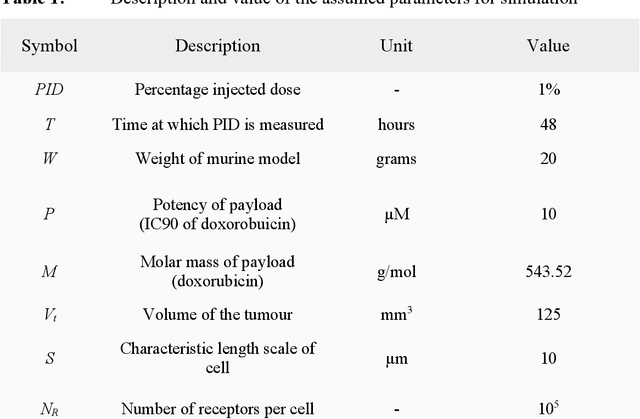
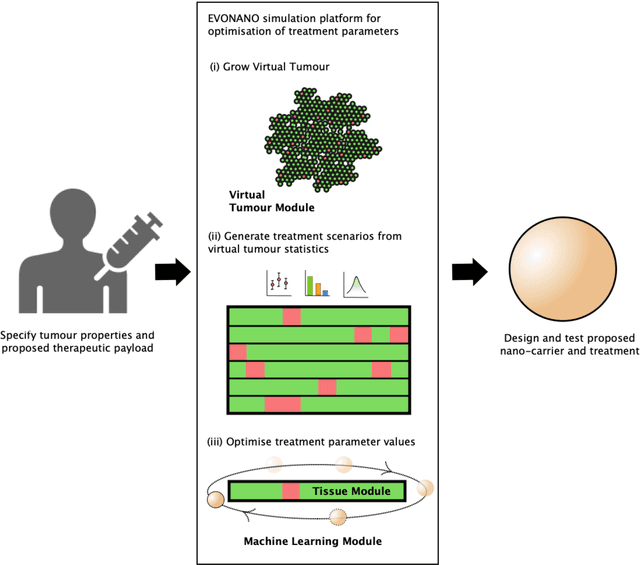
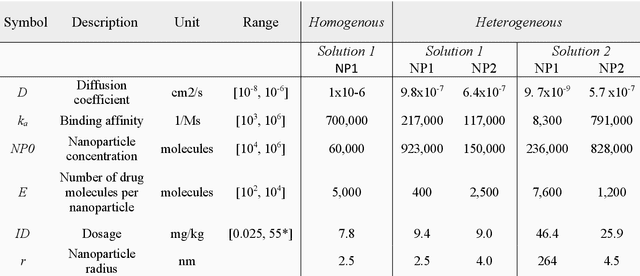
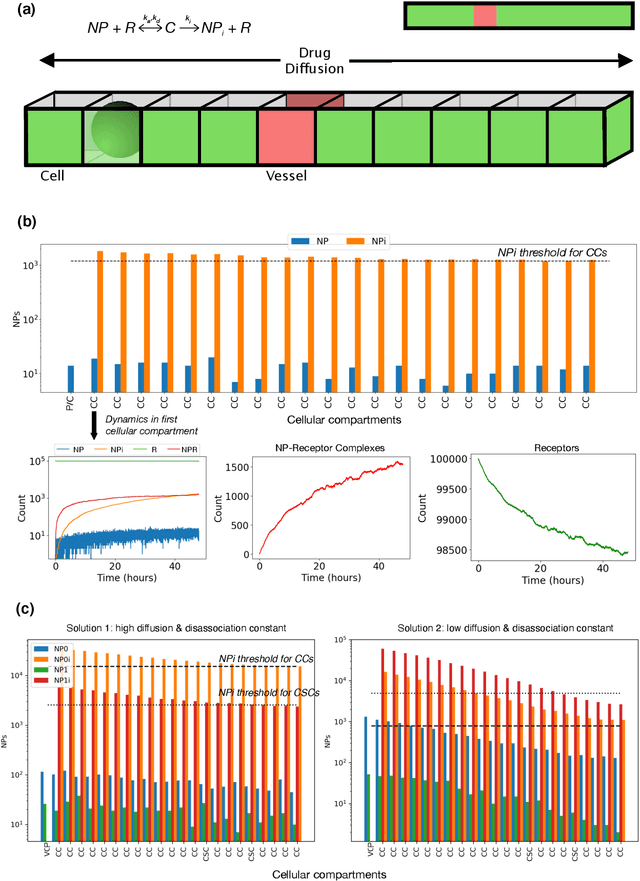
Abstract:We present the EVONANO platform for the evolution of nanomedicines with application to anti-cancer treatments. EVONANO includes a simulator to grow tumours, extract representative scenarios, and then simulate nanoparticle transport through these scenarios to predict nanoparticle distribution. The nanoparticle designs are optimised using machine learning to efficiently find the most effective anti-cancer treatments. We demonstrate our platform with two examples optimising the properties of nanoparticles and treatment to selectively kill cancer cells over a range of tumour environments.
Evolving Nano Particle Cancer Treatments with Multiple Particle Types
Nov 10, 2020



Abstract:Evolutionary algorithms have long been used for optimization problems where the appropriate size of solutions is unclear a priori. The applicability of this methodology is here investigated on the problem of designing a nano-particle (NP) based drug delivery system targeting cancer tumours. Utilizing a treatment comprising of multiple types of NPs is expected to be more effective due to the higher complexity of the treatment. This paper begins by utilizing the well-known NK model to explore the effects of fitness landscape ruggedness upon the evolution of genome length and, hence, solution complexity. The size of a novel sequence and the absence or presence of sequence deletion are also considered. Results show that whilst landscape ruggedness can alter the dynamics of the process, it does not hinder the evolution of genome length. These findings are then explored within the aforementioned real-world problem. In the first known instance, treatments with multiple types of NPs are used simultaneously, via an agent-based open source physics-based cell simulator. The results suggest that utilizing multiple types of NPs is more efficient when the solution space is explored with the evolutionary techniques under a predefined computational budget.
Protein Structured Reservoir computing for Spike-based Pattern Recognition
Aug 07, 2020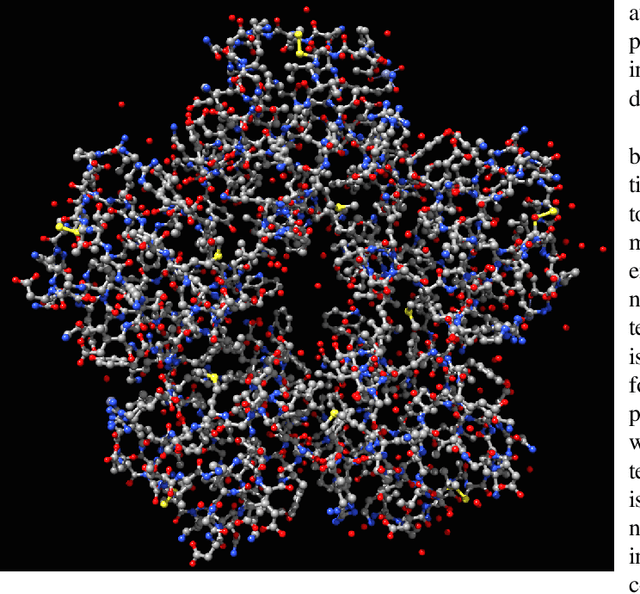
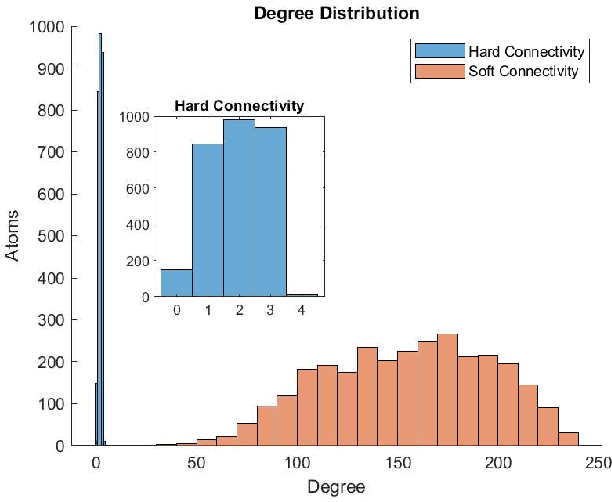
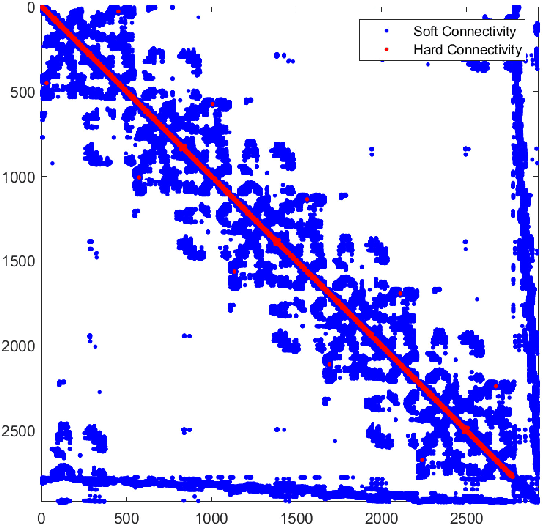

Abstract:Nowadays we witness a miniaturisation trend in the semiconductor industry backed up by groundbreaking discoveries and designs in nanoscale characterisation and fabrication. To facilitate the trend and produce ever smaller, faster and cheaper computing devices, the size of nanoelectronic devices is now reaching the scale of atoms or molecules - a technical goal undoubtedly demanding for novel devices. Following the trend, we explore an unconventional route of implementing a reservoir computing on a single protein molecule and introduce neuromorphic connectivity with a small-world networking property. We have chosen Izhikevich spiking neurons as elementary processors, corresponding to the atoms of verotoxin protein, and its molecule as a 'hardware' architecture of the communication networks connecting the processors. We apply on a single readout layer various training methods in a supervised fashion to investigate whether the molecular structured Reservoir Computing (RC) system is capable to deal with machine learning benchmarks. We start with the Remote Supervised Method, based on Spike-Timing-Dependent-Plasticity, and carry on with linear regression and scaled conjugate gradient back-propagation training methods. The RC network is evaluated as a proof-of-concept on the handwritten digit images from the MNIST dataset and demonstrates acceptable classification accuracy in comparison with other similar approaches.
Novelty search employed into the development of cancer treatment simulations
Mar 21, 2020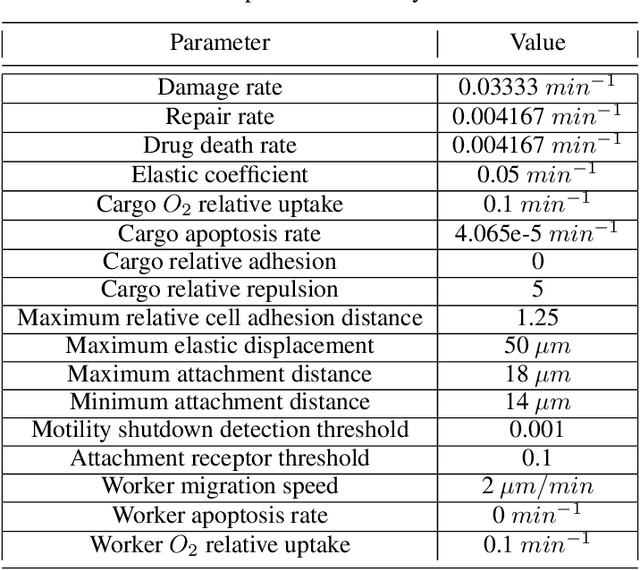
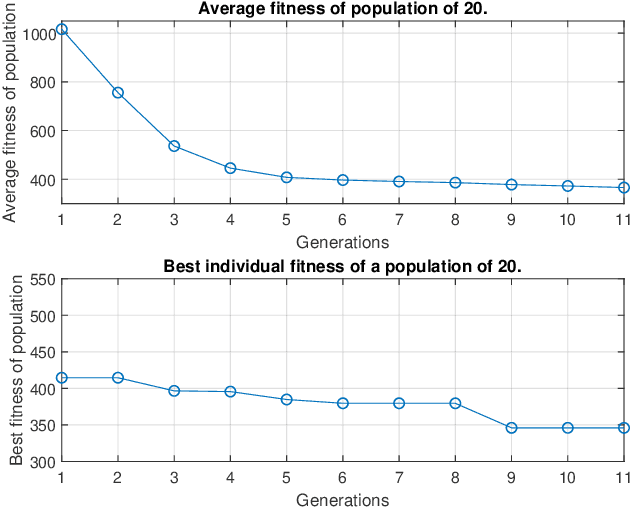
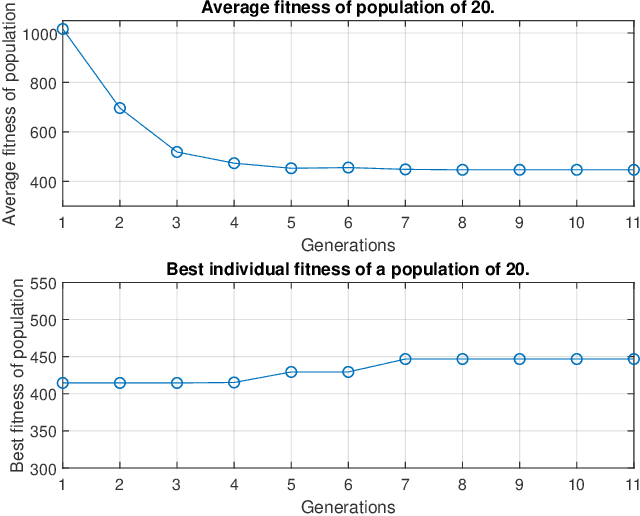
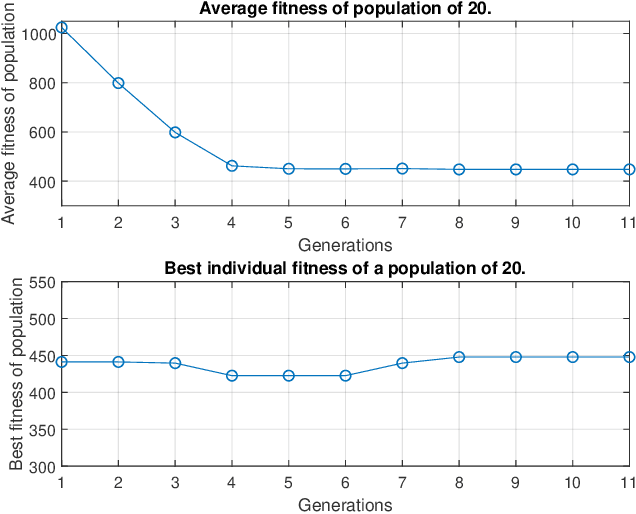
Abstract:Conventional optimization methodologies may be hindered when the automated search is stuck into local optima because of a deceptive objective function landscape. Consequently, open ended search methodologies, such as novelty search, have been proposed to tackle this issue. Overlooking the objective, while putting pressure into discovering novel solutions may lead to better solutions in practical problems. Novelty search was employed here to optimize the simulated design of a targeted drug delivery system for tumor treatment under the PhysiCell simulator. A hybrid objective equation was used containing both the actual objective of an effective tumour treatment and the novelty measure of the possible solutions. Different weights of the two components of the hybrid equation were investigated to unveil the significance of each one.
 Add to Chrome
Add to Chrome Add to Firefox
Add to Firefox Add to Edge
Add to Edge